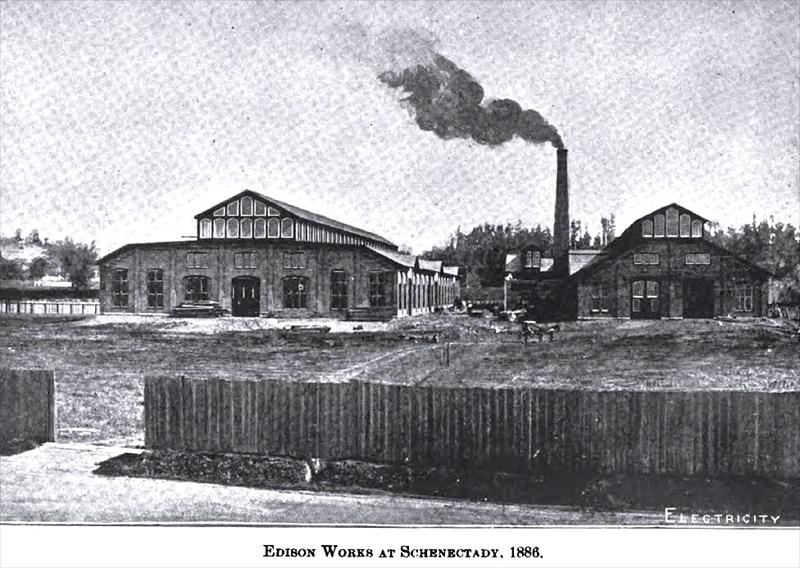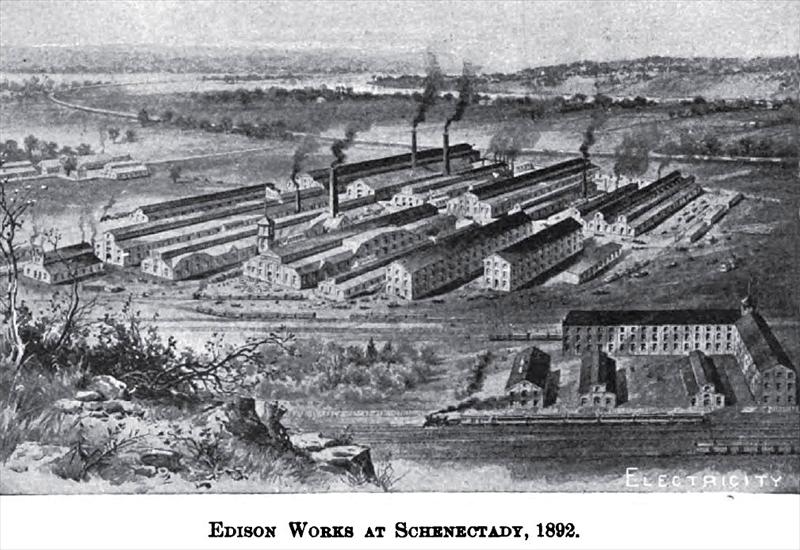|
Title: |
1892 Article-Edison General Electric Co., Factory View |
|
Source: |
Electricity, 27 Jul 1892 pgs 16 & 26 |
|
Insert Date: |
10/10/2011 7:26:20 PM |
|
The effect of the development of the business upon the Edison Electric Light Co. and its licensed manufacturing Companies was marked. The Goerok Street shop was greatly enlarged and became the Edison Machine Works. The small lamp factory at Menlo Park had in 1881 been found inadequate for the manufacture of the lamps required, and a large factory at East Newark, N.J., was purchased and occupied in 1882 by the Edison Lamp Co., which corporation was formed by Mr. Edison to carry on this part of the business. The output of the factory rapidly increased in its new quarters, and has steadily increased up to this time, its present capacity being about 25,000 lamps per day. Mr. Bergmann took partners into his business of manufacturing sockets and other details, and purchased the large factory at Avenue B and 17th Street, New York, where it soon became necessary to employ several hundred hands. Thus organized, the business was carried on for several years, but after a time its growth necessitated some changes in the organization of the Companies, and in 1886, The Edison Electric Light Co. and The Edison Company for Isolated Lighting consolidated and became a new corporation under- the name of the Edison Electric Light Co., this company being at the present time still in existence. Shortly afterwards a new and separate company was formed by the various manufacturing interests, under the name of Edison United Manufacturing Co. The object of this company was to sell the products of the various manufactories, which were known as the " Shops," and also to install isolated plants and small central stations. The powers and scope of this company were larger than those of the old Isolated Company, and under these conditions the new company was enabled to extend the business at a rate which had scarcely been dreamed of a few years before its organization. The business was thus conducted for several years until the organization, in 1889, of the Edison General Electric Company, with a capital of $12,000,000 (afterwards increased to $15,000,000), which was formed to acquire the then vast manufacturing interests of the Edison Companies, as well as the selling company, the Edison United Manufacturing Co. This arrangement was carried through, and until its recent consolidation with the Thomson-Houston Company, the Edison General Electric Co. further enlarged and extended the Edison business throughout the whole of North and South America, with almost universal success. As early as 1879, Edison had evolved a scheme for electric railway traction. In 1880 a track was built at Menlo Park, little attention being paid to the construction of the road-bed, and experimental runs were soon made, the motor of about 15 h. p. capacity hauling one car. This was not a trolley road, the motor being supplied with current which was carried by the rails. Thousands of passengers were carried during the two years in which this road was in operation, and the idea seemed to be a success. For some years following, however, little or no progress was made by the Edison Company in railway work. In 1890, the company absorbed the Sprague Electric Railway and Motor Company, and obtained control of the patents of F. J. Sprague, whose work on the Richmond road had attracted such wide attention. Since this time remarkable progress has been made in this branch of the Company's business. |
|
 1886 Edison General Electric Co., Factory View
1886 Edison General Electric Co., Factory View
 1892 Edison General Electric Co., Factory View
1892 Edison General Electric Co., Factory View
|
|